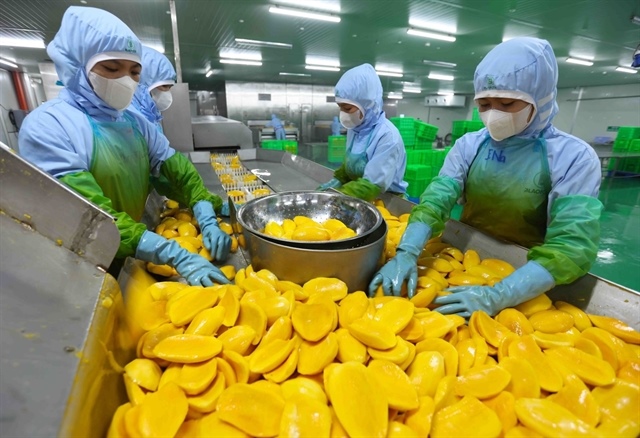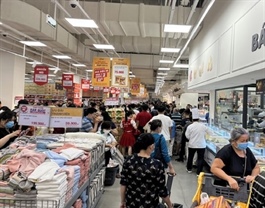Creating a breakthrough for logistics in the Red River Delta region
Creating a breakthrough for logistics in the Red River Delta region
The Red River Delta's logistics industry has a lot of potential and opportunity ahead thanks to the region's coordinated transport infrastructure system, Vice Chairman of the Party Central Committee's Economic Commission Nguyễn Đức Hiển said.

The Hải Phòng Port in Hải Phòng City. Localities in the Red River Delta region are advised to prioritise the development of the logistics industry to advance the area's socio-economic development. — VNA/VNS Photo Tuấn Anh |
Hiển said the region is an attractive market for the logistics sector as it is considered the northern gateway for Việt Nam and ASEAN to connect with China - the world's largest market.
The new generation free trade agreements that Việt Nam has participated in have also created new opportunities for the region to speed up the development of its logistics sector, the vice chairman said.
However, Hiển said at a conference in Hải Phòng this week, that the region's logistics sector still faces many challenges including insufficient land funds to build warehouses, a lack of cargo transit and not enough logistic centres.
Trần Thanh Hải, Deputy Director of the Import-Export Department under the Ministry of Industry and Trade (MoIT), agreed. He said at the conference that the region's logistics infrastructure has yet to be optimised.
In addition, there is inadequate support for the logistics sector, unreasonable fees and surcharges at seaports and a lack of a highly skilled workforce, he said.
Furthermore, the pressure for green transformation in the logistics sector has become a pressure on all businesses. If businesses do not promptly implement criteria to green up the logistics industry, such as having a warehouse without a green building certificate, they may not participate in the supply chain and customers will not come to them, Hải said.
In that context, in addition to long-term strategies and medium-term plans, he said that it is necessary to consider some breakthrough drivers for the region's logistics industry.
He emphasised the importance of building a local development plan, promoting links between localities in the region and building large, modern, smart and automated logistics centres.
According to the MoIT, localities in the Red River Delta region should prioritise the development of the logistics industry in a bid to advance the area's socio-economic development.
The ministry has advised localities to review, amend and supplement mechanisms and policies that encourage investment in logistics services.
That approach will ensure that development is synchronised and feasible, creating a breakthrough mechanism that will establish robust logistics corporations, identify key logistics types with potential for development and promote the application of technology and digital transformation, the MoIT said.
The ministry has also recommended that localities focus on investing in the construction and upgrading of logistics centres that apply advanced science and technology and modern equipment.
That investment will improve competitiveness and service quality, while reducing costs.
They must also develop programmes, plans and policies most suitable to the specific characteristics and advantages of each locality and region, in order to attract investment from other countries, especially traffic infrastructure and infrastructure of industrial zones and clusters.
The Red River Delta region also needs to establish a clean land fund to attract investment from leading international logistics enterprises in the development of logistics infrastructure, contributing to turning it into a logistics service centre in Southeast Asia and the world.
In addition, the localities in the region should focus on human resource development and improve business and investment environments, including administrative reform and cutting of unsuitable business investment conditions, to improve the competitiveness of the localities.
The Red River Delta, one of the country’s six socioeconomic regions, consists of 11 centrally governed provinces and cities including Hà Nội, Hải Phòng, Hải Dương, Bắc Ninh, Vĩnh Phúc, Hưng Yên, Thái Bình, Nam Định, Hà Nam, Ninh Bình and Quảng Ninh.



























